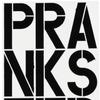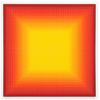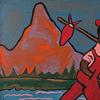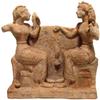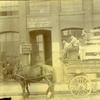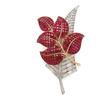Highlights From Reading Public Museum Travel In 'Across the Atlantic: American Impressionism through the French Lens'
- January 02, 2021 16:45
Across the Atlantic: American Impressionism through the French Lens—drawn mostly from the collection of the Reading Public Museum in Reading, PA—explores the path to Impressionism through the 19th century in France. The show examines the relationship between French Impressionism of the 1870s and 1880s and the American interpretation of the style in the decades that followed. The exhibition will be on view in the Asheville Art Museum’s Appleby Foundation Exhibition Hall from January 22 through April 19, 2021.
More than 75 paintings and works on paper help tell the story of the “new style” of painting which developed at the end of the 19th century—one that emphasized light and atmospheric conditions, rapid or loose brushstrokes, and a focus on brightly colored scenes from everyday life. Scenes include both urban and rural settings from when artists preferred to paint outdoors and capture changing effects of light during different times of day and seasons of the year.
“The first things I notice in this exhibition are the beautiful color palettes found in Impressionist art—rich greens, whimsical purples, and serene blues,” says Whitney Richardson, associate curator. “If you are an enthusiast of French and American Impressionism, this exhibition is a dream come true. The Asheville Art Museum is delighted to host this exhibition—primarily from the Reading Public Museum’s impressive collection of Impressionist art—and offer visitors a fully immersive view of this late 19th-century style of painting.”
Across the Atlantic will also feature works by artists whose paintings helped pave the pathway to Impressionism such as members of the Barbizon School including Jean-Baptiste-Camille Corot and Narcisse Diaz de la Peña. Other French painters whose techniques and subjects paralleled those of the Impressionists like Charles-François Daubigny, Leon-Augustin Lhermitte, and Jean-Charles Cazin will also be examined. Many of these artists practiced painting outdoors, en plein air, a new freedom that the commercial availability of tubed paint and portable easels afforded them.
Some of the key artists featured in the exhibition include Edgar Degas, Mary Cassatt, Camille Pissarro, and others who exhibited in the official Impressionist exhibitions in Paris in the 1870s and 1880s. Although familiar and beloved by modern audiences, in their own time, the Impressionists were thought of as a rather radical alternative to the traditions of academic painting. The progressive group of artists avoided the official, state-funded Salon in Paris and instead decided to exhibit their works in unconventional locations.
Among the earliest American artists to embrace the style were John Singer Sargent, William Merritt Chase, John Henry Twachtman, Willard Metcalf, Childe Hassam, and Frank W. Benson, among others, whose works are included in the exhibition. American collectors and taste-makers were among the first to begin collecting Impressionist paintings. By the 1910s, the Reading Public Museum was collecting works by American Impressionists, a genre that would later become one of its greatest strengths.
A host of American artists, many of whom traveled to France around the turn of the century to continue their studies in fine art, embraced the style including Daniel Garber, Edward Redfield, Robert Spencer, Arthur Watson Sparks, Robert Lewis Reid, William Paxton, Chauncey Ryder, Frederick John Mulhaupt, and Guy Wiggins, are highlighted in this exhibition.











